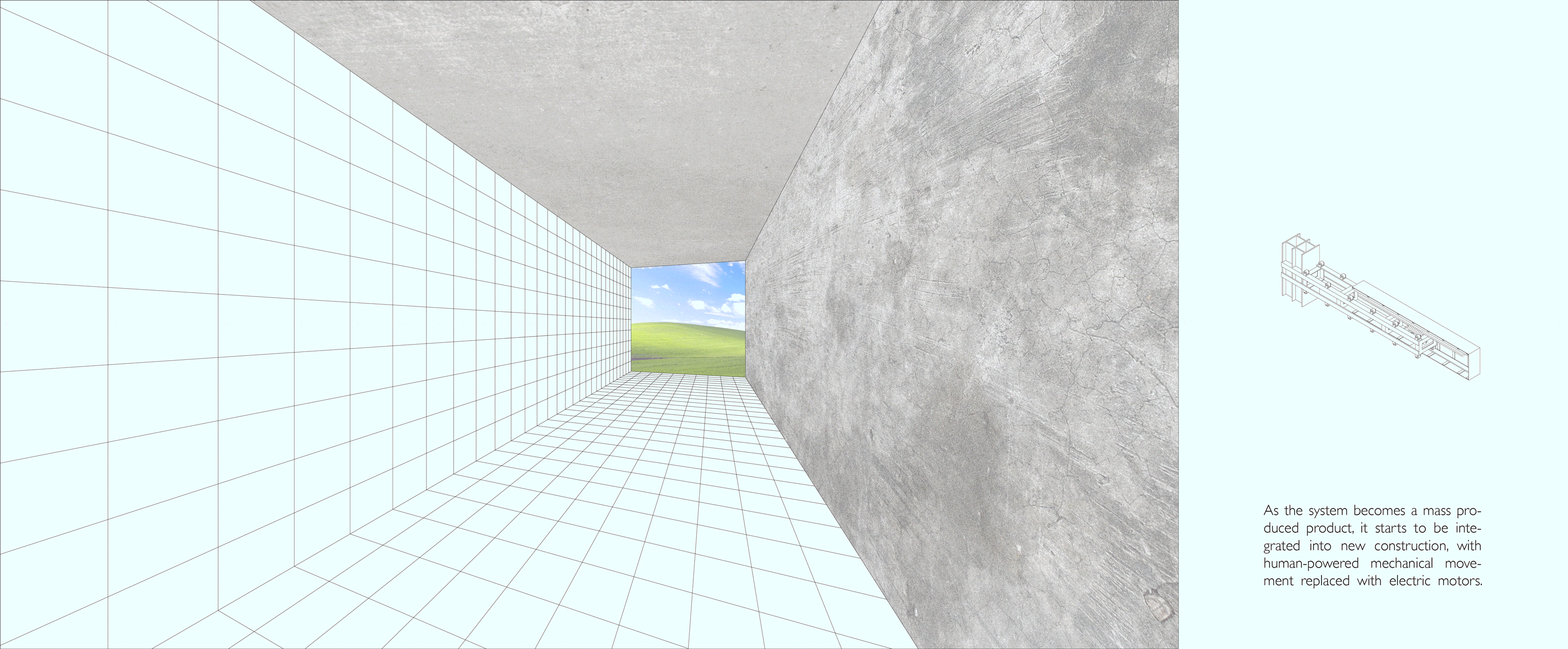

Traces of the past permeate a home, which acts as a sort of repository for memories. Thus, a move is never just a relocation, it’s also a departure from the past and its signifiers. But what if houses conformed to our memories rather than the other way around? In The Settlement, a submission to our July open call, Noah Gotlib and Pica Limbaseanu propose a future where a family “will soon be able to experience everything within the confines of the home, yet part with nothing.”
Responding to the increasingly itinerant lifestyles of today, the project grapples with changing ownership models, where a family rarely owns the same home for multiple generations—or ever. “As a result, memories are disposed of as well,” they write, “becoming faint remnants of vivid experiences left behind in their local contexts.”

An architecture of the future must be capable of retention, adaptation, and creationSubsequently, The Settlement imagines a home equipped with a three-dimensional interface “capable of near infinite combinations,” which can transform the living space according to the memories or desires of the temporary inhabitants. The form of the home itself would change to any desired shape with only the volume of the structure as a limitation.
“An architecture of the future must be capable of retention, adaptation, and creation, in addition to being as nomadic as its inhabitants,” Gotlib and Limbaseanu write.


the technologically enabled nomad brings his home wherever he goesThey lay out a timeline for their project, beginning with a product line of wood boxes that double as furniture and can be arranged by the owner or renter into a variety of forms. As these become mass-produced, they would be integrated into new construction projects and automated.
In the next stage, carbon fiber latices form “a substructure for tens of thousands of extruding boxes that can mimic objects and scenarios in addition to living spaces.” These are followed by nanobots that can replicate even the smallest of objects. Finally, the “technologically enabled nomad brings his home wherever he goes,” as the interior becomes fully programmable.

This feature was submitted to our July open call for projects that envision new forms of Domesticity. This month, Archinect's coverage includes a special thematic focus on Games. Submit to our open call by August 21, 2016.
Writer and fake architect, among other feints. Principal at Adjustments Agency. Co-founder of Encyclopedia Inc. Get in touch: nicholas@archinect.com
3 Comments
Great stuff!
Very intriguing. I like the "retention, adaption, and creation" concept.
Hi Nicholas,
Have you seen this??:
http://www.dezeen.com/2014/05/09/movie-hiroshi-ishii-transform-shape-shifting-table-top-mit-media-lab/
Very good tie in to your speculative project
Block this user
Are you sure you want to block this user and hide all related comments throughout the site?
Archinect
This is your first comment on Archinect. Your comment will be visible once approved.